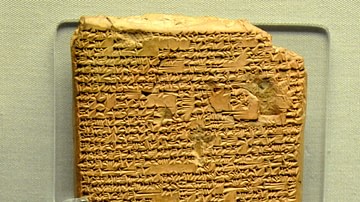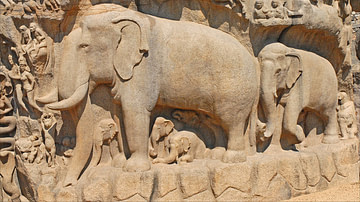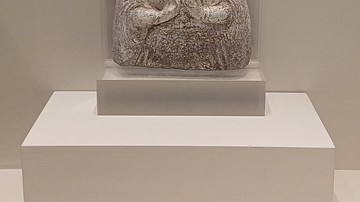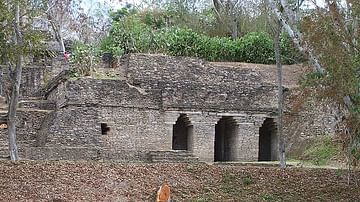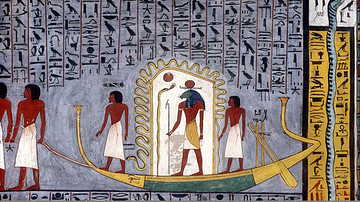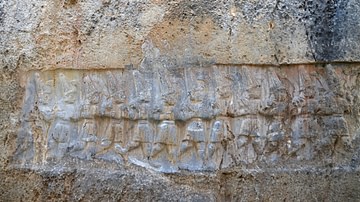Illustration
The legend, written in Akkadian, describes how Ishtar, goddess of sexuality and warfare, went to the Underworld. Ishtar decided to undertake the journey, although the Underworld was known as the 'land of no return' for humans and gods alike. On the way down she passes through seven doorways and each time the gatekeeper removes from her the symbols and clothes of her divinity. Eventually Ishtar comes face to face with Erishkigal, the goddess of death, and collapses. All sexual activity stops on earth. The gods are distraught and Ea, god of wisdom, creates an impotent boy who is attractive to Erishkigal. He manages to persuade Erishkigal to have Ishtar sprinkled with the waters of life and revived. Ishtar passes back through the seven doors, and regains her clothing and attributes.
Neo-Assyrian era, 7th century BCE, from Nineveh, northern Iraq, part of the library of King Ashurbanipal, 669-631 BCE. (The British Museum, London)
About the Author
Cite This Work
APA Style
Amin, O. S. M. (2014, March 31). Goddess Ishtar descent to the underworld tablet. World History Encyclopedia. Retrieved from https://www.worldhistory.org/image/2464/goddess-ishtar-descent-to-the-underworld-tablet/
Chicago Style
Amin, Osama Shukir Muhammed. "Goddess Ishtar descent to the underworld tablet." World History Encyclopedia. Last modified March 31, 2014. https://www.worldhistory.org/image/2464/goddess-ishtar-descent-to-the-underworld-tablet/.
MLA Style
Amin, Osama Shukir Muhammed. "Goddess Ishtar descent to the underworld tablet." World History Encyclopedia. World History Encyclopedia, 31 Mar 2014. Web. 16 Apr 2025.



